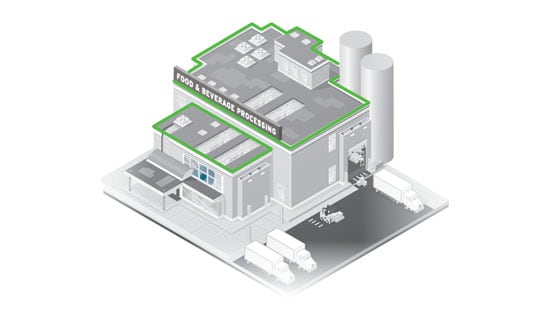Protecting Your Food Processing Facility from Rodent Ceiling Activity
The Pest Monitor Newsletter

- Rodent activity in the ceiling is often difficult to detect
- Rodents will live inside walls scurrying both horizontally and vertically, thus gaining access to the ceiling.
- Rodents can scale and climb wires, cables, and pipes to get to and from ceilings and roofs.
A rodent harboring above your ceiling is no less likely to contaminate food and food surfaces than a rodent harboring at ground level. That contamination leads to significant food safety issues. According to the CDC, rodents can transmit more than 35 diseases to humans and federal food agencies will cite food production facilities for pest presence – including rodents in ceiling voids. As indicated in the FDA’s Inspection Report of the Peanut Corp. of America (PCA) facility implicated in the 2009 Salmonella outbreak, inspectors’ observations of rodent ceiling activity included:
- Approximately six dead mice were found in the false ceiling area.
- Unprotected possible rodent/pests entryways were observed at the ceiling/wall junction.
- Negative pressure from the false ceiling areas where significant signs of rodent activity were observed had drawn debris into a room.
Though not exclusively attributed to rodents or other pest issues, the 2009 Salmonella outbreak at PCA caused the business to permanently shut down and led to prison time for some of its executives.
While that is an extreme case, any rodent activity—particularly if publicized in an FDA report, customer sighting, or product damage—can harm the reputation of your company and your brand as well as cause a temporary shutdown resulting in loss of productivity and financial repercussions.
Proactive Service. As with any pest, the best way to prevent food safety issues is to prevent the pest presence – and rodent ceiling activity is no exception. Proactively eliminating rodent activity before it has a chance to take hold is critical in preventing an infestation. In fact, the sooner the activity is detected, the quicker it can be eliminated. Early detection has been shown to reduce interior rodent activity three times faster. Unfortunately, ceilings are not a common inspection area for many pest management companies, but Ecolab has found that rodent ceiling service, particularly where there is a history of rodent activity, can help reduce the activity by up to 60%.
Rodent presence will compromise your food safety efforts, can lead to regulatory fines and shutdown, impact your brand reputation, and cause financial consequences. Preventing rodent entry and proactively detecting and eliminating their presence – from below AND above – are key in maintaining food safety and safeguarding your business.


